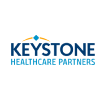The Strategic Planning Process in 4 Steps
To guide you through the strategic planning process, we created this 4 step process you can use with your team. We’ll cover the basic definition of strategic planning, what core elements you should include, and actionable steps to build your strategic plan.
What is Strategic Planning?
Strategic Planning is when a process where organizations define a bold vision and create a plan with objectives and goals to reach that future. A great strategic plan defines where your organization is going, how you’ll win, who must do what, and how you’ll review and adapt your strategy development.
By definition, what is a strategic plan? What needs to be included?
A strategic plan or a business strategic plan should include the following:
- Your organization’s vision organization’s vision of the future.
- A clearly Articulated mission and values statement.
- A current state assessment that evaluates your competitive environment, new opportunities, and new threats.
- What strategic challenges you face.
- A growth strategy and outlined market share.
- Long-term strategic goals.
- An annual plan with SMART goals or OKRs to support your strategic goals.
- Clear measures, key performance indicators, and data analytics to measure progress.
- A clear strategic planning cycle, including how you’ll review, refresh, and recast your plan every quarter.
Overview of the Strategic Planning Process:
The strategic management process involves taking your organization on a journey from point A (where you are today) to point B (your vision of the future).
Part of that journey is the strategy built during strategic planning, and part of it is execution during the strategic management process. A good strategic plan dictates “how” you travel the selected road.
Effective execution ensures you are reviewing, refreshing, and recalibrating your strategy to reach your destination. The planning process should take no longer than 90 days. But, move at a pace that works best for you and your team and leverage this as a resource.
To kick this process off, we recommend 1-2 weeks (1-hour meeting with the Owner/CEO, Strategy Director, and Facilitator (if necessary) to discuss the information collected and direction for continued planning.)

Questions to Ask:
- Who is on your Planning Team? What senior leadership members and key stakeholders are included? Checkout these links you need help finding a strategic planning consultant, someone to facilitate strategic planning, or expert AI strategy consulting.
- Who will be the business process owner (Strategy Director) of planning in your organization?
- Fast forward 12 months from now, what do you want to see differently in your organization as a result of your strategic plan and implementation?
Outcome:
- Planning team members are informed of their roles and responsibilities.
- A strategic planning schedule is established.
- Existing planning information and secondary data collected.
Action Grid:
| Action | Who is Involved | Tools & Techniques | Estimated Duration |
|---|---|---|---|
| Determine organizational readiness | Owner/CEO, Strategy Director | Readiness assessment | |
| Establish your planning team and schedule | Owner/CEO, Strategy Leader | Kick-Off Meeting: 1 hr | |
| Collect and review information to help make the upcoming strategic decisions | Planning Team and Executive Team | Data Review Meeting: 2 h |
Step 1: Determine Organizational Readiness
Set up your plan for success – questions to ask:
- Are the conditions and criteria for successful planning in place at the current time? Can certain pitfalls be avoided?
- Is this the appropriate time for your organization to initiate a planning process? Yes or no? If no, where do you go from here?
Step 2: Develop Your Team & Schedule
Who is going to be on your planning team? You need to choose someone to oversee the strategy implementation (Chief Strategy Officer or Strategy Director) and strategic management of your plan? You need some of the key individuals and decision makers for this team. It should be a small group of approximately 12-15 people.
Step 3: Collect Current Data
All strategic plans are developed using the following information:
- The last strategic plan, even if it is not current
- Mission statement, vision statement, values statement
- Past or current Business plan
- Financial records for the last few years
- Marketing plan
- Other information, such as last year’s SWOT, sales figures and projections
Step 4: Review Collected Data
Review the data collected in the last action with your strategy director and facilitator.
- What trends do you see?
- Are there areas of obvious weakness or strengths?
- Have you been following a plan or have you just been going along with the market?
Conclusion: A successful strategic plan must be adaptable to changing conditions. Organizations benefit from having a flexible plan that can evolve, as assumptions and goals may need adjustments. Preparing to adapt or restart the planning process is crucial, so we recommend updating actions quarterly and refreshing your plan annually.

Strategic Planning Phase 1: Determine Your Strategic Position
Want more? Dive into the “Evaluate Your Strategic Position” How-To Guide.
Action Grid
| Action | Who is Involved | Tools & Techniques | Estimated Duration |
|---|---|---|---|
| Conduct a scan of macro and micro trends in your environment and industry (Environmental Scan) | Executive Team and Planning Team |
|
2 – 3 weeks |
| Identify market and competitive opportunities and threats | Executive Team and Planning Team |
|
2 – 3 weeks |
| Clarify target customers and your value proposition | Marketing team, sales force, and customers |
|
2 – 3 weeks |
| Gather and review staff and partner feedback to determine strengths and weaknesses | All Staff |
|
2 – 3 weeks |
| Synthesize into a SWOT Solidify your competitive advantages based on your key strengths |
Executive Team and Strategic Planning Leader |
|
Strategic Position Meeting: 2-4 hours |
Step 1: Identify Strategic Issues
Strategic issues are critical unknowns driving you to embark on a robust strategic planning process. These issues can be problems, opportunities, market shifts, or anything else that keeps you awake at night and begging for a solution or decision. The best strategic plans address your strategic issues head-on.
Questions to Ask:
- How will we grow, stabilize, or retrench in order to sustain our organization into the future?
- How will we diversify our revenue to reduce our dependence on a major customer?
- What must we do to improve our cost structure and stay competitive?
- How and where must we innovate our products and services?
Step 2: Conduct an Environmental Scan
Conducting an environmental scan will help you understand your operating environment. An environmental scan is called a PEST analysis, an acronym for Political, Economic, Social, and Technological trends. Sometimes, it is helpful to include Ecological and Legal trends as well. All of these trends play a part in determining the overall business environment.
Step 3: Conduct a Competitive Analysis
The reason to do a competitive analysis is to assess the opportunities and threats that may occur from those organizations competing for the same business you are. You need to understand what your competitors are or aren’t offering your potential customers. Here are a few other key ways a competitive analysis fits into strategic planning:
- To help you assess whether your competitive advantage is really an advantage.
- To understand what your competitors’ current and future strategies are so you can plan accordingly.
- To provide information that will help you evaluate your strategic decisions against what your competitors may or may not be doing.
Learn more on how to conduct a competitive analysis here.
Step 4: Identify Opportunities and Threats
Opportunities are situations that exist but must be acted on if the business is to benefit from them.
What do you want to capitalize on?
Questions to Ask:
- What new needs of customers could you meet?
- What are the economic trends that benefit you?
- What are the emerging political and social opportunities?
- What niches have your competitors missed?
Threats refer to external conditions or barriers preventing a company from reaching its objectives.
What do you need to mitigate? What external driving force do you need to anticipate?
Questions to Answer:
- What are the negative economic trends?
- What are the negative political and social trends?
- Where are competitors about to bite you?
- Where are you vulnerable?
Step 5: Identify Strengths and Weaknesses
Strengths refer to what your company does well.
What do you want to build on?
Questions to Ask:
- What do you do well (in sales, marketing, operations, management)?
- What are your core competencies?
- What differentiates you from your competitors?
- Why do your customers buy from you?
Weaknesses refer to any limitations a company faces in developing or implementing a strategy.
What do you need to shore up?
Questions to Answer:
- Where do you lack resources?
- What can you do better?
- Where are you losing money?
- In what areas do your competitors have an edge?
Step 6: Customer Segments
Customer segmentation defines the different groups of people or organizations a company aims to reach or serve.
Who are we providing value to?
Questions to Ask:
- What needs or wants define your ideal customer?
- What characteristics describe your typical customer?
- Can you sort your customers into different profiles using their needs, wants and characteristics?
- Can you reach this segment through clear communication channels?
Step 7: Develop Your SWOT
A SWOT analysis is a quick way of examining your organization by looking at the internal strengths and weaknesses in relation to the external opportunities and threats. Creating a SWOT analysis lets you see all the important factors affecting your organization together in one place.
It’s easy to read, easy to communicate, and easy to create. Take the Strengths, Weaknesses, Opportunities, and Threats you developed earlier, review, prioritize, and combine like terms. The SWOT analysis helps you ask and answer the following questions: “How do you….”
- Build on your strengths
- Shore up your weaknesses
- Capitalize on your opportunities
- Manage your threats
Strategic Planning Process Phase 2: Developing Strategy
Want More? Deep Dive Into the “Developing Your Strategy” How-To Guide.
Action Grid
| Action | Who is Involved | Tools & Techniques | Estimated Duration |
|---|---|---|---|
| Determine your primary business, business model and organizational purpose (mission) | Planning Team (All staff if doing a survey) |
|
2 weeks (gather data, review and hold a mini-retreat with Planning Team) |
| Identify your corporate values (values) | Planning Team (All staff if doing a survey) |
|
2 weeks (gather data, review and hold a mini-retreat with Planning Team) |
| Create an image of what success would look like in 3-5 years (vision) | Planning Team (All staff if doing a survey) |
|
2 weeks (gather data, review and hold a mini-retreat with Planning Team) |
| Solidify your competitive advantages based on your key strengths | Planning Team (All staff if doing a survey) |
|
2 weeks (gather data, review and hold a mini-retreat with Planning Team) |
| Formulate organization-wide strategies that explain your base for competing | Planning Team (All staff if doing a survey) |
|
2 weeks (gather data, review and hold a mini-retreat with Planning Team) |
| Agree on the strategic issues you need to address in the planning process | Planning Team |
|
2 weeks (gather data, review and hold a mini-retreat with Planning Team) |
Step 1: Develop Your Mission Statement
The mission statement describes an organization’s purpose or reason for existing.
What is our purpose? Why do we exist? What do we do?
Questions to Ask:
- What are your organization’s goals? What does your organization intend to accomplish?
- Why do you work here? Why is it special to work here?
- What would happen if we were not here?
Outcome: A short, concise, concrete statement that clearly defines the scope of the organization.
Step 2: Discover Your Values
Your values statement clarifies what your organization stands for, believes in and the behaviors you expect to see as a result. Check our the post on great what are core values and examples of core values.
How will we behave?
Questions to Ask:
- What are the key non-negotiables that are critical to the company’s success?
- What guiding principles are core to how we operate in this organization?
- What behaviors do you expect to see?
- If the circumstances changed and penalized us for holding this core value, would we still keep it?
Outcome: Short list of 5-7 core values.
Step 3: Casting Your Vision Statement
A Vision Statement defines your desired future state and directs where we are going as an organization.
Where are we going?
Questions to Ask:
- What will our organization look like 5–10 years from now?
- What does success look like?
- What are we aspiring to achieve?
- What mountain are you climbing and why?
Outcome: A picture of the future.
Step 4: Identify Your Competitive Advantages
A competitive advantage is a characteristic of an organization that allows it to meet its customer’s need(s) better than its competition can. It’s important to consider your competitive advantages when creating your competitive strategy.
What are we best at?
Questions to Ask:
- What are your unique strengths?
- What are you best at in your market?
- Do your customers still value what is being delivered? Ask them.
- How do your value propositions stack up in the marketplace?
Outcome: A list of 2 or 3 items that honestly express the organization’s foundation for winning.
Step 5: Crafting Your Organization-Wide Strategies
Your competitive strategy is the general methods you intend to use to reach your vision. Regardless of the level, a strategy answers the question “how.”
How will we succeed?
Questions to Ask:
- Is your market or industry target broad or narrow?
- Broad: market scope; a relatively wide market emphasis.
- Narrow: limited to only one or few segments in the market
- Does your competitive position focus on lowest total cost or product/service differentiation or both?
Outcome: Establish the general, umbrella methods you intend to use to reach your vision.
Phase 3: Strategic Plan Development
Want More? Deep Dive Into the “Build Your Plan” How-To Guide.
Action Grid
| Action | Who is Involved | Tools & Techniques | Estimated Duration |
|---|---|---|---|
| Develop your strategic framework and define long-term strategic objectives/priorities | Executive Team Planning Team | Strategy Comparison Chart Strategy Map | Leadership Offsite: 1 – 2 days |
| Set short-term SMART organizational goals and measures | Executive Team Planning Team | Strategy Comparison Chart Strategy Map | Leadership Offsite: 1 – 2 days |
| Select which measures will be your key performance indicators | Executive Team and Strategic Director | Strategy Map | Follow Up Offsite Meeting: 2-4 hours |
Strategic Planning Process Step 1: Use Your SWOT to Set Priorities
If your team wants to take the next step in the SWOT analysis, apply the TOWS Strategic Alternatives Matrix to your strategy map to help you think about the options you could pursue. To do this, match external opportunities and threats with your internal strengths and weaknesses, as illustrated in the matrix below:
TOWS Strategic Alternatives Matrix
| External Opportunities (O) | External Threats (T) | |
|---|---|---|
| Internal Strengths (S) | SO Advantage Strategies: Strategies that use strengths to maximize opportunities. | ST Protective Strategies: Strategies that use strengths to minimize threats. |
| Internal Weaknesses (W) | WO Conversion Strategies: Strategies that minimize weaknesses by taking advantage of opportunities. | WT Defensive Strategies: Strategies that minimize weaknesses and avoid threats. |
Evaluate the options you’ve generated, and identify the ones that give the greatest benefit, and that best achieve the mission and vision of your organization. Add these to the other strategic options that you’re considering.
Step 2: Define Long-Term Strategic Objectives
Long-Term Strategic Objectives are long-term, broad, continuous statements that holistically address all areas of your organization. What must we focus on to achieve our vision? Check out examples of strategic objectives here. What are the “big rocks”?
Questions to ask:
- What are our shareholders or stakeholders expectations for our financial performance or social outcomes?
- To reach our outcomes, what value must we provide to our customers? What is our value proposition?
- To provide value, what process must we excel at to deliver our products and services?
- To drive our processes, what skills, capabilities and organizational structure must we have?
Outcome: Framework for your plan – no more than 6. You can use the balanced scorecard framework, OKRs, or whatever methodology works best for you. Just don’t exceed 6 long-term objectives.

Step 3: Setting Organization-Wide Goals and Measures
Once you have formulated your strategic objectives, you should translate them into goals and measures that can be communicated to your strategic planning team (team of business leaders and/or team members).
You want to set goals that convert the strategic objectives into specific performance targets. Effective strategic goals clearly state what, when, how, and who, and they are specifically measurable. They should address what you must do in the short term (think 1-3 years) to achieve your strategic objectives.
Organization-wide goals are annual statements that are SMART – specific, measurable, attainable, responsible, and time-bound. These are outcome statements expressing a result to achieve the desired outcomes expected in the organization.
What is most important right now to reach our long-term objectives?
Outcome: Clear outcomes for the current year.

Step 4: Select KPIs
Key Performance Indicators (KPI) are the key measures that will have the most impact in moving your organization forward. We recommend you guide your organization with measures that matter. See examples of KPIs here.
How will we measure our success?
Outcome: 5-7 measures that help you keep the pulse on your performance. When selecting your Key Performance Indicators (KPIs), ask, “What are the key performance measures we need to track to monitor if we are achieving our goals?” These KPIs include the key goals you want to measure that will have the most impact on moving your organization forward.
Step 5: Cascade Your Strategies to Operations
To move from big ideas to action, creating action items and to-dos for short-term goals is crucial. This involves translating strategy from the organizational level to individuals. Functional area managers and contributors play a role in developing short-term goals to support the organization.
Before taking action, decide whether to create plans directly derived from the strategic plan or sync existing operational, business, or account plans with organizational goals. Avoid the pitfall of managing multiple sets of goals and actions, as this shifts from strategic planning to annual planning.
Questions to Ask
- How are we going to get there at a functional level?
- Who must do what by when to accomplish and drive the organizational goals?
- What strategic questions still remain and need to be solved?
Outcome:
Department/functional goals, actions, measures and targets for the next 12-24 months
Step 6: Cascading Goals to Departments and Team Members
Now in your Departments / Teams, you need to create goals to support the organization-wide goals. These goals should still be SMART and are generally (short-term) something to be done in the next 12-18 months. Finally, you should develop an action plan for each goal.
Keep the acronym SMART in mind again when setting action items, and make sure they include start and end dates and have someone assigned their responsibility. Since these action items support your previously established goals, it may be helpful to consider action items your immediate plans on the way to achieving your (short-term) goals. In other words, identify all the actions that need to occur in the next 90 days and continue this same process every 90 days until the goal is achieved.
Examples of Cascading Goals:
| 1 Increase new customer base. |
| 1.1 Reach a 15% annual increase in new customers. (Due annually for 2 years) |
| 1.1.1 Implement marketing campaign to draw in new markets. (Marketing, due in 12 months) |
| 1.1.1.1 Research the opportunities in new markets that we could expand into. (Doug) (Marketing, due in 6 months) |
| 1.1.1.1.1 Complete a competitive analysis study of our current and prospective markets. (Doug) (Marketing, due in 60 days) |
| 1.1.1.2 Develop campaign material for new markets. (Mary) (Marketing, due in 10 months) |
| 1.1.1.2.1 Research marketing methods best for reaching the new markets. (Mary) (Marketing,due in 8 months) |
Phase 4: Executing Strategy and Managing Performance
Want more? Dive Into the “Managing Performance” How-To Guide.
Action Grid
| Action | Who is Involved | Tools & Techniques | Estimated Duration |
|---|---|---|---|
| Establish implementation schedule | Planning Team |
|
1-2 hours |
| Train your team to use OnStrategy to manage their part of the plan | HR Team, Department Managers & Teams |
|
1 hr per team member |
| Review progress and adapt the plan at Quarterly Strategy Reviews (QBR) | Department Teams + Executive Team |
|
Department QBR: 2 hrs Organizational QBR: 4 hrs |
Step 1: Strategic Plan Implementation Schedule
Implementation is the process that turns strategies and plans into actions in order to accomplish strategic objectives and goals.
How will we use the plan as a management tool?
Questions to Ask:
- Communication Schedule: How and when will you roll-out your plan to your staff? How frequently will you send out updates?
- Process Leader: Who is your strategy director?
- Structure: What are the dates for your strategy reviews (we recommend at least quarterly)?
- System & Reports: What are you expecting each staff member to come prepared with to those strategy review sessions?
Outcome: Syncing your plan into the “rhythm of your business.”
Once your resources are in place, you can set your implementation schedule. Use the following steps as your base implementation plan:
- Establish your performance management and reward system.
- Set up monthly and quarterly strategy meetings with established reporting procedures.
- Set up annual strategic review dates including new assessments and a large group meeting for an annual plan review.
Now you’re ready to start plan roll-out. Below are sample implementation schedules, which double for a full strategic management process timeline.

Step 2: Tracking Goals & Actions
Monthly strategy meetings don’t need to take a lot of time – 30 to 60 minutes should suffice. But it is important that key team members report on their progress toward the goals they are responsible for – including reporting on metrics in the scorecard they have been assigned.
By using the measurements already established, it’s easy to make course corrections if necessary. You should also commit to reviewing your Key Performance Indicators (KPIs) during these regular meetings. Need help comparing strategic planning software? Check out our guide.
Effective Strategic Planning: Your Bi-Annual Checklist
Never lose sight of the fact that strategic plans are guidelines, not rules. Every six months or so, you should evaluate your strategy execution and strategic plan implementation by asking these key questions:
- Will your goals be achieved within the time frame of the plan? If not, why?
- Should the deadlines be modified? (Before you modify deadlines, figure out why you’re behind schedule.)
- Are your goals and action items still realistic?
- Should the organization’s focus be changed to put more emphasis on achieving your goals?
- Should your goals be changed? (Be careful about making these changes – know why efforts aren’t achieving the goals before changing the goals.)
- What can be gathered from an adaptation to improve future planning activities?
Why Track Your Goals?
- Ownership: Having a stake and responsibility in the plan makes you feel part of it and leads you to drive your goals forward.
- Culture: Successful plans tie tracking and updating goals into organizational culture.
- Implementation: If you don’t review and update your strategic goals, they are just good intentions
- Accountability: Accountability and high visibility help drive change. This means that each measure, objective, data source and initiative must have an owner.
- Empowerment: Changing goals from In Progress to Complete just feels good!
Step 3: Review & Adapt
Guidelines for Your Strategy Review
The most important part of this meeting is a 70/30 review. 30% is about reviewing performance, and 70% should be spent on making decisions to move the company’s strategy forward in the next quarter.
The best strategic planners spend about 60-90 minutes in the sessions. Holding meetings helps focus your goals on accomplishing top priorities and accelerating the organization’s growth. Although the meeting structure is relatively simple, it does require a high degree of discipline.
Strategic planning frequently asked questions
Read our Frequently Asked Questions about strategic planning to learn how to build a great strategic plan.
Strategic planning is when organizations define a bold vision and create a plan with objectives and goals to reach that future. A great strategic plan defines where your organization is going, how you’ll win, who must do what, and how you’ll review and adapt your strategy..
Your strategic plan needs to include an assessment of your current state, a SWOT analysis, mission, vision, values, competitive advantages, growth strategy, growth enablers, a 3-year roadmap, and annual plan with strategic goals, OKRs, and KPIs.
A strategic planning process should take no longer than 90 days to complete from start to finish! Any longer could fatigue your organization and team.
There are four overarching phases to the strategic planning process that include: determining position, developing your strategy, building your plan, and managing performance. Each phase plays a unique but distinctly crucial role in the strategic planning process.
Prior to starting your strategic plan, you must go through this pre-planning process to determine your organization’s readiness by following these steps:
Ask yourself these questions: Are the conditions and criteria for successful planning in place now? Can we foresee any pitfalls that we can avoid? Is there an appropriate time for our organization to initiate this process?
Develop your team and schedule. Who will oversee the implementation as Chief Strategy Officer or Director? Do we have at least 12-15 other key individuals on our team?
Research and Collect Current Data. Find the following resources that your organization may have used in the past to assist you with your new plan: last strategic plan, mission, vision, and values statement, business plan, financial records, marketing plan, SWOT, sales figures, or projections.
Finally, review the data with your strategy director and facilitator and ask these questions: What trends do we see? Any obvious strengths or weaknesses? Have we been following a plan or just going along with the market?



























